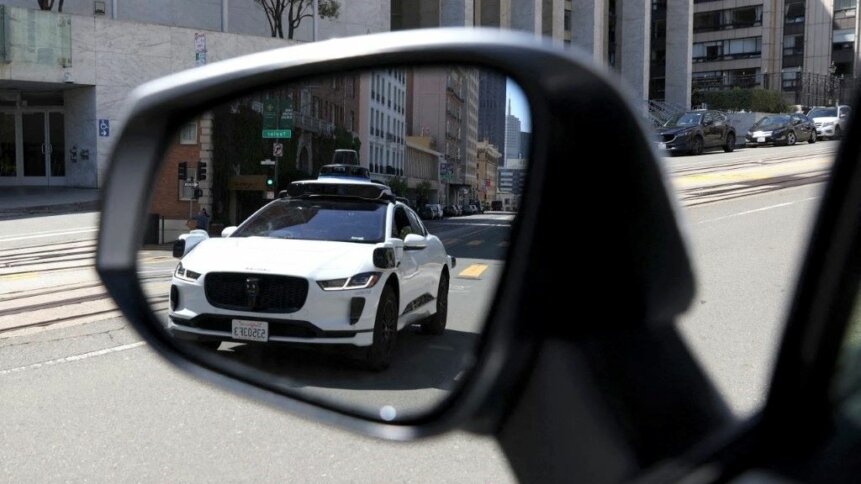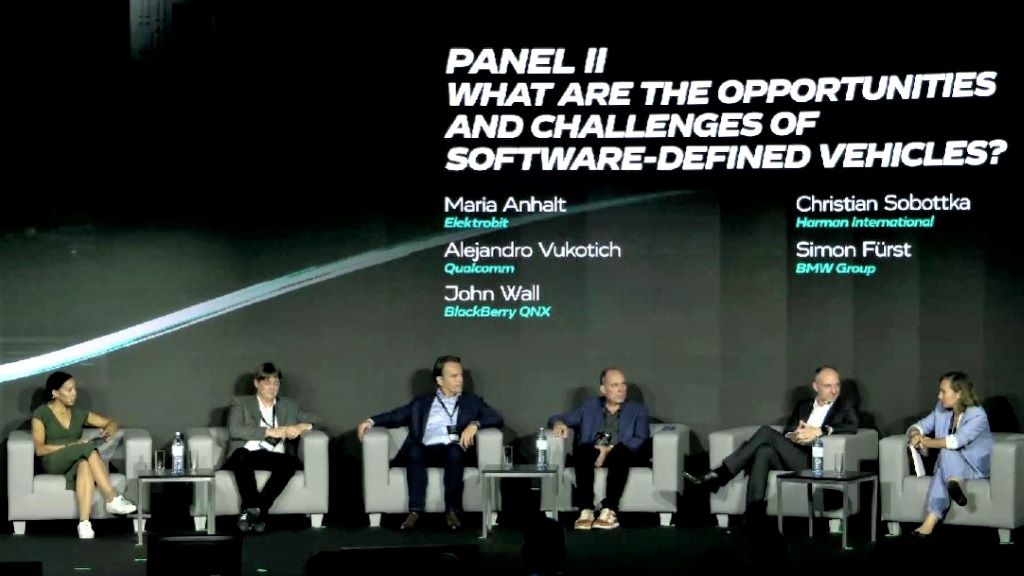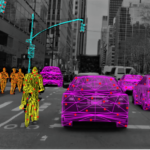App store model: blessing or curse for software-defined vehicle developers?

|
Getting your Trinity Audio player ready...
|
Every industry has its collection of buzzwords, including the automotive sector. And one phrase that’s trending particularly highly is ‘software-defined vehicle’. Automobiles have had electronic control units (ECUs) to control the various parts of the vehicle, including the engine, transmission, safety systems, and infotainment – to give just a few examples – for decades.
However, while it’s true to say that software has long been a part of keeping vehicles on the road, up until now, that code has been tied very closely to the hardware – in the main, embedded devices featuring automotive-grade microcontrollers.
Contemporary automobiles can have up to 180 ECUs as carmakers have added more systems to their designs to appeal to buyers, provide more automation, and boost safety. It’s an approach that compartmentalizes the various functionality; software that sits on each of those microcontrollers can change little throughout the lifetime of the car or truck.
The concept of a software-designed vehicle breaks out of that mold and enables OEMs to continuously update their designs to include new functionality. It’s an approach that’ll be familiar to anyone who owns a modern smartphone.
Previous generation mobile devices, just like legacy vehicles, had software applications that were built in and users typically only got to experience new apps when they bought a more up-to-date phone. And then came Apple and Google’s app store model, which changed everything.
Discussing the challenges and opportunities of software-defined vehicles
This month, OEMs and Tier 1 suppliers gathered in Austria at Vienna’s Hofburg Imperial Palace to debate the challenges and opportunities of software-defined vehicles, as part of The Autonomous Main Event 2023. And given how well the app store approach has worked well for smartphone makers, developers, and customers, it’s no surprise to hear the model mentioned multiple times during the panel discussion.
However, as the experts pointed out, there are some key differences between mobile and automotive ecosystems. In the smartphone world, Apple and Google control the app stores for iPhone and Android devices, respectively. But in the automotive domain, who would control such a software-defined vehicle app store? Simon Fürst of BMW Group makes the point that OEMs would need to agree on a universal platform upon which the car makers and other stakeholders could host their apps.
Certainly, automotive firms are keen to use software – delivered through a suitable marketplace – as a way of differentiating themselves, particularly if hardware platforms are shared or at least similar. Electric vehicles, which are expected to dominate new car sales in the near future, are based upon so-called skateboard chassis that some industry experts believe could become white-label goods. The differentiation would then have to come through design, including software-defined vehicle functionality.
Picking up on the topic of design, Maria Anhalt – CEO of Elektrobit, an automotive software developer – commented that adopting a software-defined vehicle approach means that stakeholders can start from the user experience (UX) and work down to the hardware. This contrasts with the methodology of starting with the vehicle platform and working up, which is arguably more common in the automotive sector.

Panel discussion: experts share their views at The Autonomous Main Event 2023.
Listening in to issues raised ahead of the panel session, it’s clear that things are far from straightforward for established automotive players. Car makers, especially those with 100-year histories, tend to be evolutionary rather than revolutionary. The appeal of firms such as BMW and Mercedes is strongly tied to the brand and its heritage. And against this backdrop, it’s no surprise that new entrants have been able to be more disruptive.
App store advantage
The car industry is based around a three-year model cycle, but consumers are used to seeing new mobile devices every 12 months. However, pursuing a software-defined vehicle strategy would allow auto firms to become much more nimble in offering new functionality to customers with out having to carry out upgrades at the dealership or changing the underlying hardware.
Anhalt noted that automotive software has been forecast to grow in value as a fraction of the overall vehicle from hundreds to thousands of dollars. For car makers that can keep customers on side, there’s the potential to grow revenue streams. But it could point to a very different future for car buyers. Upgrades could be tied to users rather than vehicles, so each time models are re-sold, new owners would need to fork out to re-activate features.
🌐 It's time to accelerate your #opensource journey in #automotive #tech! 🚀 Join us at #EclipseCon2023 on Oct 16-17 for the Eclipse SDV Community Day. Let's build the future of mobility together through open source. https://t.co/u0vnOe6htX pic.twitter.com/bL6TUDDwEl
— Eclipse Software Defined Vehicle (@SDVeclipse) September 12, 2023
Already, car makers benefit from the data gathered from connected vehicles. Developers can use the information sent to the cloud to build digital twins, which can enable predictive maintenance and deliver other efficiency savings.
Monitoring the performance of automotive systems helps to provide feedback so that architecture can adapt to unknowns – a scenario that’s amplified for fully autonomous vehicles, where no matter how many miles are driven, it’s impossible to account for all eventualities. But a balance has to be struck.
Flexibility may provide the means to adapt to unknowns, but having a stable architecture is more straightforward for OEMs to maintain. Also, upgrades need to be verified. No developer wants to fix one issue only to create a problem somewhere else.
Part of the brief for this year’s event, organized by The Autonomous, was to move beyond the hype surrounding self-driving vehicles and discuss how industry players can team up to unlock the potential of AVs. Smart connected vehicles have much to offer, but the challenges of building higher levels of autonomy have been underestimated.
Artificial intelligence can add to the perception of vehicles on the road, but that has to sit on top of other layers – for example, to provide fail-safe recovery when unexpected events occur. Self-driving success stories so far have been along predictable routes – for example, autonomous trucks are now commonplace at large port facilities.
Returning the app store model, phones have become computers in our pockets and ultimately a software-defined vehicle will become a computer on wheels, which opens the door to developments in mixed and augmented reality.
Christian Sobottka, of Harman International and who was also on the panel debating the challenges and opportunities of software-defined vehicles, commented that creating recurring value from future vehicles will be based around experiences.
Much like we don’t necessarily consider what’s inside our phones, future car buyer may care less about the underlying technology and instead prioritize the ability to download apps and activate features that matter to them.









